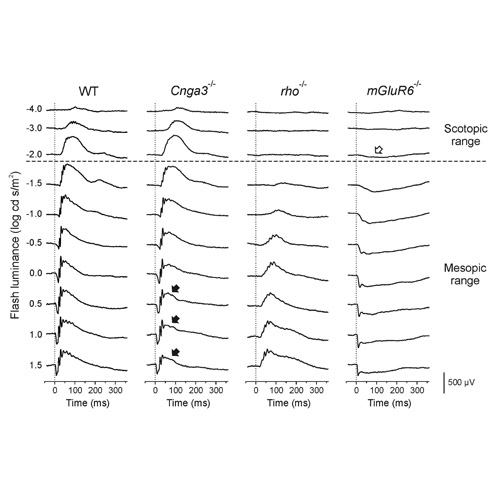Electroretinographic assessment of rod- and cone-mediated bipolar cell pathways using flicker stimuli in mice
01-Jun-2015
Scientific Reports, 5, Article number: 10731, doi:10.1038/srep10731
Mouse full-field electroretinograms (ERGs) are dominated by responses of photoreceptors and depolarizing (ON-) bipolar cells, but not much of hyperpolarizing (OFF-) bipolar cells under conventional recording conditions. Here we investigate a novel ERG protocol in mice for functional assessment of the major ON- and OFF-bipolar cell pathways using flicker stimuli for a high luminance with varying frequency up to 30 Hz. Wild-type (WT) and functionally specific transgenic mice (Cnga3-/-, no cone photoreceptor function; rho-/-, no rod photoreceptor function; mGluR6-/-, no ON-bipolar cell function) were examined. The Cnga3-/- flicker ERG was similar to the WT flicker ERG at very low stimulus frequencies, whereas ERGs were comparable between WT and rho-/- mice at 5 Hz and above. Between 5 and 15 Hz, ERGs in mGluR6-/- mice differed in configuration and amplitude from those in WT and rho-/- mice; in contrast, response amplitudes above 15 Hz were comparable among WT, rho-/- and mGluR6-/- mice. In summary, we found three frequency ranges with these conditions that are dominated by activity in the rod pathways (below 5 Hz), cone ON-pathway (between 5 and 15 Hz), and cone OFF-pathway (above 15 Hz) that enables a quick overview of the functionality of the major bipolar cell pathways.











